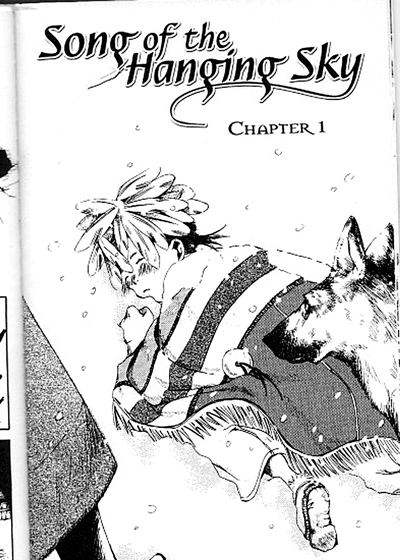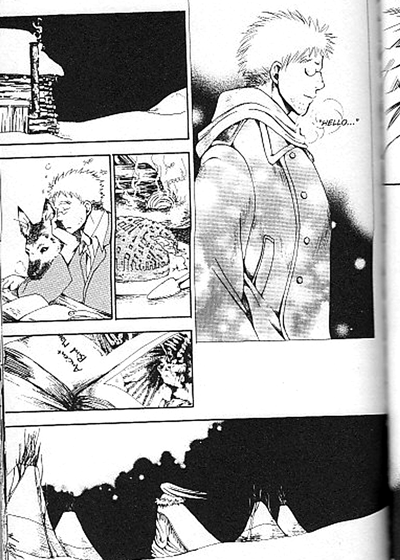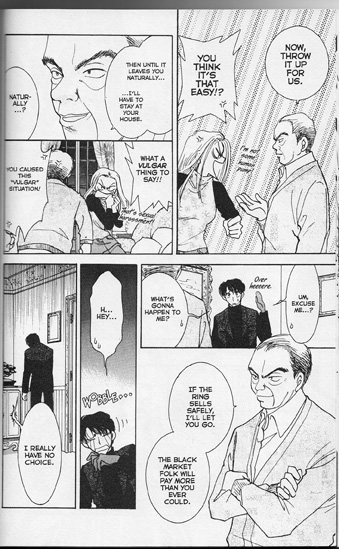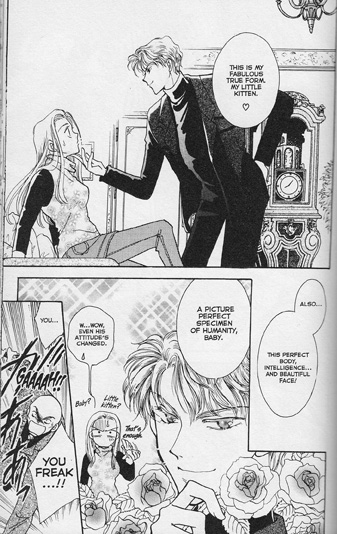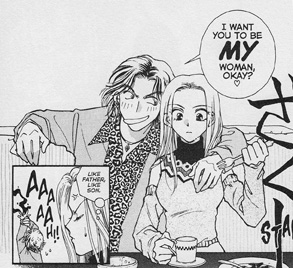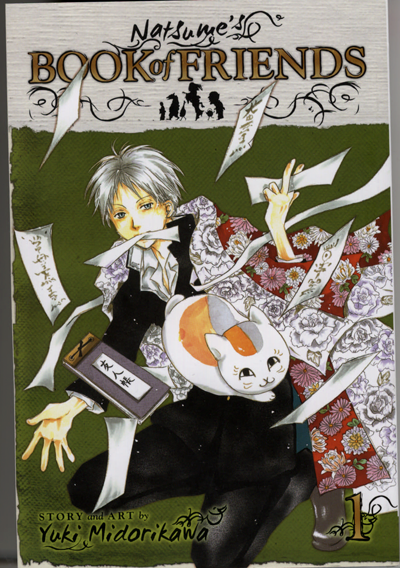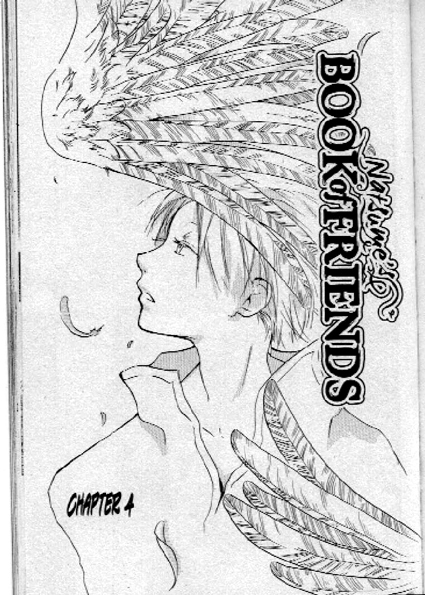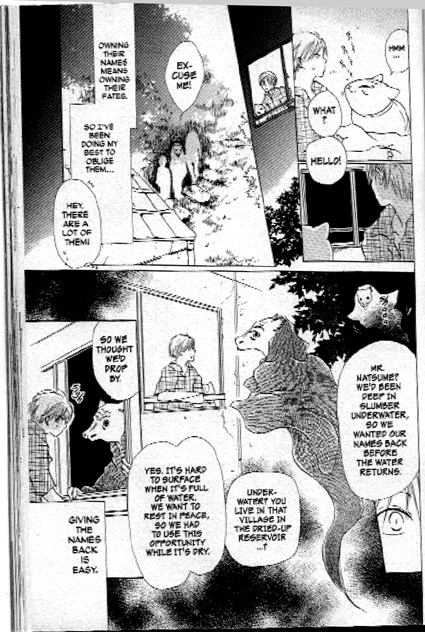I’d like to make a couple of notes before beginning.
Autobiography. I’m afraid that I approached this comic like a book, a story, a tale. In truth, the story isn’t a story crafted and directed by the author except in methods of portrayal. The other actors aren’t characters, they’re people with their own agendas and abilities to walk off stage when the story theme would dictate that they stay and kiss under the mistletoe or at least buy a pink rabbit with pearls. The main character is a person, not a character. But in order to engage in the story, I treated her like a character in my head. I liked her, and I grew to hate Sally, and I thought the mom should’ve gotten a grip, and a thousand other reactions that more befit a novel than a nonfiction book. Throughout this essay, I’ll probably engage with Ariel-the-character as well as Ariel-the-author even though I know Ariel-the-person will be along soon. *gulp* But I can only approach it as best I can and as honestly as I can as a critic and as a reader even if I know that the person might be hurt or affected by my words.
Queerness. Second, usually I think it’s good to know nothing about the personal life of a given critic, but when one is commenting on a persecuted group, especially when dealing with identity, it’s worth knowing how a person stands: with, against, or where. So I’m not straight and I’m female, and there you have it.
That preface over with, I’m going to dive right in.
In this essay, I’m going to address: the art and its changes through the story as well as some technique choices, Joyce and Sally sitting in a tree, lesbian fashion choices, Ariel’s fashion choices, dildoes, and It.
In the beginning, Ariel and her friends discuss It. I was struck by how close this high schooler discussion reflected academic politics, how much Ariel felt the need to have It, how much she felt Sally had It, and how fashion reflected the presence or absence of It.
In the comic, Ariel portrays herself with a few simple visuals: she has dark, short hair; she wears converse and jeans; she wears a white or a black tee shirt; her underwear are Y-fronts. All of these code for a butch lesbian, in fashion terms. At one point in the roundtable, Caro noted (and then later pulled) a comment that Ariel had answered the gender question by saying to the Barnard interviewer ‘I am not a woman’. But I don’t think the book ever really seriously suggests that Ariel is trans; I think instead it addresses her as a woman, a very butch woman, who is a lesbian in a mostly straight world.
One of the funniest sections in the comic is when Ariel decides to change her appearance. She gets some new jeans and tries to wear them the way guys do. Except she has the same problem I do, ie, hips much bigger than the waist, which means that the damn jeans hang oddly. (This is why I am in love with certain hip-curvy jeans that came out after Likewise was released.) Ariel compares herself to the guys, trying to wear them the way the guys do, with hilarious results. She tries them pulled up like most women, especially Sally. Then she tries the half-hip look, which made me smile fondly. She ends up wearing something that isn’t what a man would wear–that doesn’t work. But the femme look doesn’t work either. So what is it?
I’d argue that she ends up dressing like a butch lesbian. Which is still female. Later, she is choosing her dick, a new dildo, and she decides to get a semi-realistic but not skin-toned one. Her harness is simple. If I may be delicately blunt here: it reads exactly like a toppy but female choice. Not a choice that’s going for a true male dick, but for the kind of appendage that allows for a pleasurable toppy experience for a woman with another woman.
There are a few comments in the comic where people take her for a guy and I’d like to address one of the most problematic aspects of this. I think the Sally issue complicates things. Sally’s not bisexual; she experiments, but she prefers men. Ariel’s in love with Sally. Who among us hasn’t tried to turn ourselves inside out to become the person our loved one wants? (I’ll grant that some of you out there haven’t, and if so, more power to you.) Playing at being more male is one way to get Sally. So to be taken for a man isn’t as simple as a yes no issue, it’s not just Ariel’s sexual identity in question, but her sexual identity in relation with others, especially Sally.
Sally is the instigator of a lot of the fashion choices, the cutting of the hair to super-short, the hip-sliding jeans, the imagining of a pair of older overweight butch dykes walking together.
So if Sally brings up the issue and muddles it, I think Ariel answers it herself. I think the gender identity is resolved in two places: The first hint comes when Ariel walks into the bathroom on her birthday and looks at herself in the mirror, “I’m pretty.” She is dressed as herself–same dark shirt and jeans and sneaks and eyeglasses. She’s just herself. What she wears when she’s drawing at her desk.
The birthday instigates getting the dick and breaking up with Sally. Even though Sally wants her again, she says no, breaking off contact, choosing the healthier route. The route where she’s not turning herself inside out.
The comic then switches to a whole lot of experimentation. The first shot of experimentation reveals Ariel in a weird, blocky jacket in a whole new art style. Trying different things with the recorder and talking to new people, hanging out in new locales, experimenting with different kinds of relationships.
See, I think my fellow roundtablers are right that Joyce’s Ulysses is a main theme and influence for Likewise. I think they’re wrong to suggest that Ariel is allying herself with Joyce, that she’s trying to do a comic Ulysses. Instead, I think she’s doing something much more daring: I think she rejecting Joyce and his Ulysses in favor of something else.
In this last part of the comic, the art switches from style to style, sometimes mimicking the emotions at play (as when it slides into scratching gestural drawings for sadness) or shocking with different locales (the music club, the strip club) and more black shapes. Sometimes the comic becomes washes, sometimes pen on wet paper, sometimes sketches, sometimes obsessively detailed. It has a patchwork feel, a taking a little of this from here and a little of that from there, and putting it together. Which is much of what Joyce does. He takes the structure from other works, makes references and in-jokes, patches together bits of literature from across the canon. It’s interesting and engaging to be sure, but–
Given the option (as I am), I prefer the Odyssey to Ulysses.
It’s not that I feel the last section of the comic is ineffectual. I think it accomplishes what it sets out to do: the comic records the voices of other characters through the recorder, through the dialog, through the written poems, through the musical lyrics. It is as though the artist is trying on different clothes. New outfits. Let’s wear Madame Bovary today, or let’s put on some New York. That’s a very Joyce approach, and I think the tension of what Ariel is expressing (other people’s voices, their stories, the strangeness of emo girl at the signing) is the tension that happens as people create themselves, but also as some of the modernist stories are written. Bits of this and that, woven together to create something else, but with the bones showing.
And towards the end, the experimentations die down. The drawings return to a style that seems to be more like the main style of the comic. Sure, there are ink washes, but it’s still recognizably the base style. The clothing settles back to a dark shirt, Converse, jeans. The heroine celebrates her graduation with her real ally, the unapologetic dyke Ms. Salt (who wears very dyke outfits). When Ariel goes home, she looks in the mirror, popping zits, and is comfortable with what she sees there. The regular clothes, the regular face. It’s not a collection of stressed voices recorded from other people, but her own perspective, her own art, her own voice. Which is different from Joyce’s Ulysses. Sally loved Joyce, and Ariel read it, and I think, I am arguing, that she tried being what Sally liked: played at being more of a man, played at comic-creating more like Joyce, but she decided instead to be who she is (or be comfortable with who she is) and draw what she draws, write what she writes in her own voice, and let go of Sally (and Joyce).
Update by Noah: The whole Likewise Roundtable is here.

